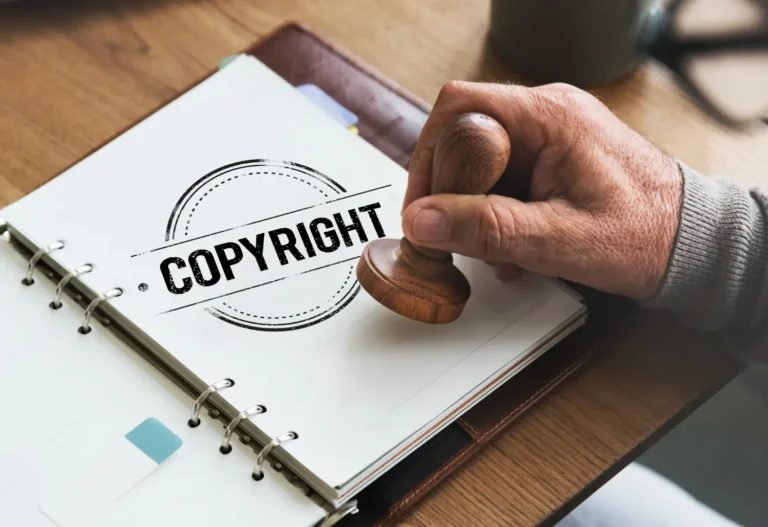
Copyright Registration Process
In today’s digital age, protecting intellectual property rights is paramount for creators and innovators. Copyright registration serves as a crucial step in safeguarding creative works such as literary, artistic, musical, and cinematic creations from unauthorized use or reproduction. Whether you’re an author, an artist, a musician, or a filmmaker, understanding the copyright registration process is essential for asserting your rights and preserving the integrity of your work. In this comprehensive guide, we’ll walk you through the Copyright Registration Process, covering everything you need to know to protect your creative endeavors effectively.
What Is Copyright and Copyright Registration Process?
Authors are granted exclusive rights to their original works under copyright, a legal term that prohibits unauthorised replication, distribution, or modification of such works. Credit and ownership of creative, literary, musical, and dramatic works are given to their authors when they are protected.
OR
Copyright registration is the process of formally registering your creative work with the relevant copyright office or authority. It provides legal evidence of ownership and establishes your exclusive rights to reproduce, distribute, perform, display, and create derivative works based on your original creation. While copyright protection automatically applies to eligible works upon creation, registration enhances your ability to enforce your rights and seek remedies in cases of infringement.
Understanding the Copyright Registration Process
Determine Eligibility
Before proceeding with copyright registration, it’s essential to determine whether your work is eligible for copyright protection. In general, eligible works include original literary works, artistic works, musical compositions, dramatic works, and audiovisual productions. However, certain categories of works, such as ideas, facts, or government publications, may not be eligible for copyright protection.
Prepare Required Documentation
Once you’ve confirmed the eligibility of your work, gather the necessary documentation for copyright registration. This may include a copy of the work itself, such as a manuscript, a recording, or a visual representation, as well as any supporting materials or documentation demonstrating your ownership of the work, such as contracts or agreements.
File Copyright Application
Next, file a copyright application with the relevant copyright office or authority. In many countries, including the United States, copyright registration is handled by the Copyright Office of the Library of Congress. The application process typically involves completing a form, paying a filing fee, and submitting copies of the work to be registered. Online filing options may be available for added convenience.
Await Processing
Once your copyright application is submitted, it undergoes processing by the copyright office or authority. This may involve a review of the application, examination of the submitted materials, and verification of eligibility criteria. Processing times may vary depending on factors such as the volume of applications received and the complexity of the work being registered.
Receive Copyright Certificate
Upon approval of your copyright application, you will receive a copyright certificate from the copyright office or authority. This certificate serves as official documentation of your copyright registration and includes important details such as the title of the work, the name of the author or creator, the date of creation, and the duration of copyright protection.
Benefits of Copyright Registration
Legal Protection
Copyright registration provides legal evidence of ownership and establishes a public record of your copyright claim. This can be invaluable in asserting your rights and defending against infringement claims in court.
Enhanced Remedies
Registered copyrights are eligible for enhanced remedies in cases of infringement, including statutory damages and attorney’s fees. This can provide greater leverage in enforcing your rights and seeking compensation for damages.

International Recognition : Copyright registration may enhance the international recognition and enforcement of your copyright claim through reciprocal agreements and treaties between countries. This can be especially beneficial for creators seeking to protect their works on a global scale.
What Is Copyright Eligible? Comprehending the Categories
Copyright protects a wide range of creative works, including:
Literary Works: Books, articles, poetry, and computer programs.
Musical Works: Compositions, lyrics, and musical arrangements.
Dramatic Works: Plays, scripts, and choreography.
Audiovisual Works: Films, videos, and multimedia presentations.
Copyright Law (Copyright Registration Process)
Copyright law provides creators with exclusive rights to their works for a specified duration, typically the author’s lifetime plus an additional period. It establishes the framework for copyright registration, infringement claims, and licensing agreements.
Other Benefits of Copyright Registration
Legal Protection: Copyright registration establishes a public record of ownership, making it easier to enforce rights in case of infringement.
Statutory Damages: Registered copyrights are eligible for statutory damages and attorney’s fees in infringement lawsuits.
Global Protection: Copyright registration provides protection in multiple countries through international treaties and agreements.
Legal Rights of a Copyright Owner
As a copyright owner, you have the exclusive rights to:
Reproduce: Make copies or duplicates of the work.
Distribute: Sell, lease, or transfer copies to the public.
Perform: Display or perform the work publicly.
Adapt: Create derivative works based on the original.
Copyright Symbol
The copyright symbol “©” signifies that a work is protected by copyright law. It serves as a notice to others that the work is subject to copyright protection and indicates the copyright owner’s claim to the rights.
Copyright Protection Validity
Copyright protection typically lasts for the author’s lifetime plus 70 years after their death. For works created by corporations or anonymously, copyright protection extends for 95 years from the date of publication or 120 years from the date of creation, whichever is shorter.
Copyright Registration Process FAQ's
The process of registration of Copyright involves the following steps:
- Filing the application: Submit an application for copyright registration along with the required documents to the Copyright Office.
- Examination: The Copyright Office examines the application to ensure compliance with the Copyright Act and rules.
- Publication: If there are no objections, the application is published in the Copyright Gazette to allow for public inspection and objections.
- Registration: After the publication period, if no objections are raised, the Copyright Office registers the copyright and issues a registration certificate.
The process of assignment of copyright involves the transfer of ownership rights from one party to another. It typically includes the following steps:
- Drafting the agreement: Prepare a copyright assignment agreement outlining the terms of the transfer, including the rights being assigned and any compensation involved.
- Execution: Both parties sign the assignment agreement in the presence of witnesses or a notary public.
- Registration: While registration of copyright assignment is not mandatory, it is advisable to register the assignment with the Copyright Office to establish legal ownership.
The fee for copyright logo registration varies depending on the jurisdiction and the type of logo being registered. In India, the fee for copyright registration of a logo is generally around Rs. 2,000 to Rs. 3,000, excluding any professional fees if using the services of a lawyer or agent.
कॉपीराइट के पंजीकरण की प्रक्रिया निम्नलिखित चरणों से गुजरती है:
- आवेदन की जमा: कॉपीराइट ऑफिस को आवश्यक दस्तावेजों के साथ कॉपीराइट पंजीकरण के लिए एक आवेदन जमा करें।
- परीक्षण: कॉपीराइट ऑफिस आवेदन की जाँच करता है ताकि कॉपीराइट अधिनियम और नियमों का पालन हो सके।
- प्रकाशन: यदि कोई आपत्ति नहीं है, तो आवेदन को कॉपीराइट गैजेट में प्रकाशित किया जाता है ताकि जनता को इसे सार्वजनिक निरीक्षण और आपत्ति करने का अवसर मिले।
- पंजीकरण: प्रकाशन की अवधि के बाद, यदि कोई आपत्ति नहीं है, तो कॉपीराइट ऑफिस कॉपीराइट पंजीकरण करता है और पंजीकरण प्रमाणपत्र जारी करता है।
Conclusion (Copyright Registration Process)
Navigating the Copyright Registration process is essential for creators seeking to protect their original works and assert their rights in the creative landscape. By understanding what copyright entails, eligibility criteria, categories, benefits, legal rights, symbol usage, and protection validity, creators can safeguard their intellectual property and foster innovation and creativity.
